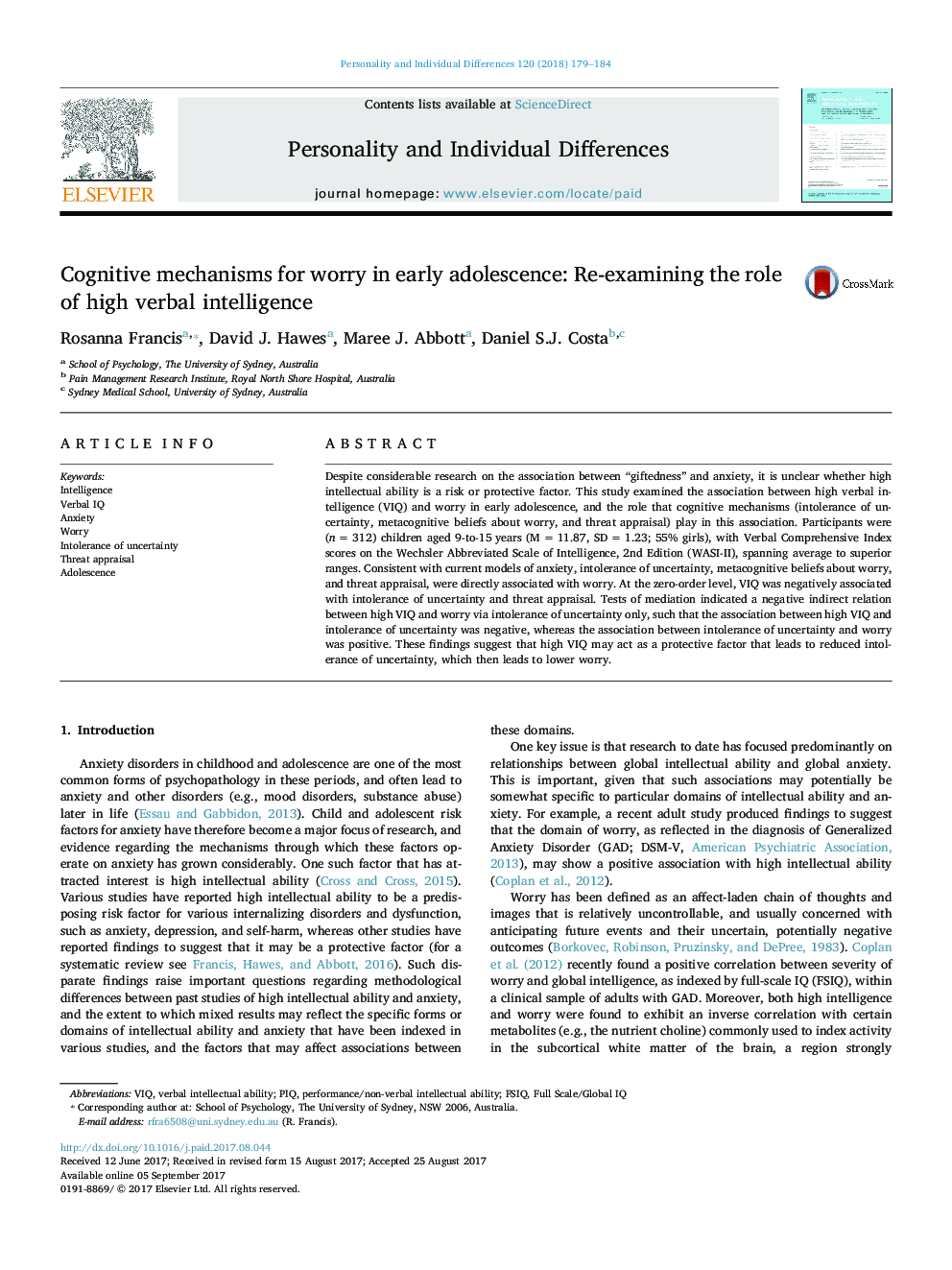| Article ID | Journal | Published Year | Pages | File Type |
|---|---|---|---|---|
| 5035534 | Personality and Individual Differences | 2018 | 6 Pages |
â¢Association between high verbal intelligence (VIQ) and worry in early adolescenceâ¢Intolerance of Uncertainty, Threat Appraisal, Metacognition investigated as mediators.â¢Negative indirect relation between high VIQ and worry only via intolerance of uncertaintyâ¢High VIQ leads to less intolerance of uncertainty, which leads to lower worry
Despite considerable research on the association between “giftedness” and anxiety, it is unclear whether high intellectual ability is a risk or protective factor. This study examined the association between high verbal intelligence (VIQ) and worry in early adolescence, and the role that cognitive mechanisms (intolerance of uncertainty, metacognitive beliefs about worry, and threat appraisal) play in this association. Participants were (n = 312) children aged 9-to-15 years (M = 11.87, SD = 1.23; 55% girls), with Verbal Comprehensive Index scores on the Wechsler Abbreviated Scale of Intelligence, 2nd Edition (WASI-II), spanning average to superior ranges. Consistent with current models of anxiety, intolerance of uncertainty, metacognitive beliefs about worry, and threat appraisal, were directly associated with worry. At the zero-order level, VIQ was negatively associated with intolerance of uncertainty and threat appraisal. Tests of mediation indicated a negative indirect relation between high VIQ and worry via intolerance of uncertainty only, such that the association between high VIQ and intolerance of uncertainty was negative, whereas the association between intolerance of uncertainty and worry was positive. These findings suggest that high VIQ may act as a protective factor that leads to reduced intolerance of uncertainty, which then leads to lower worry.
